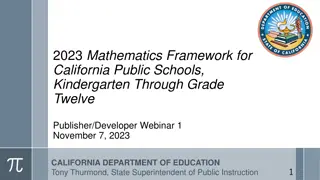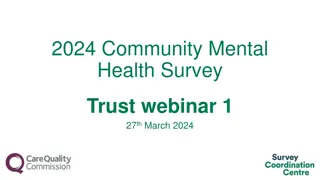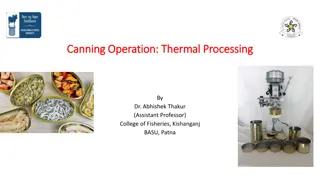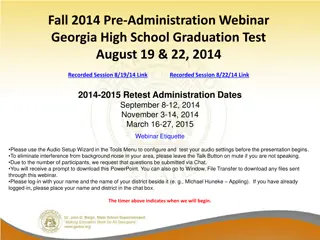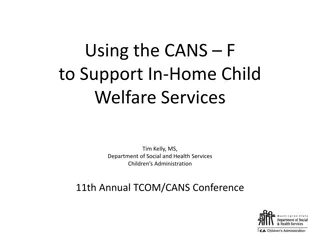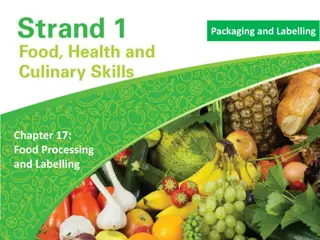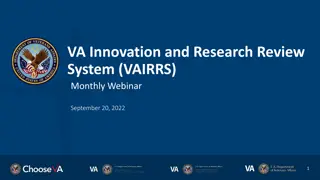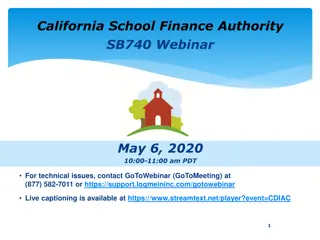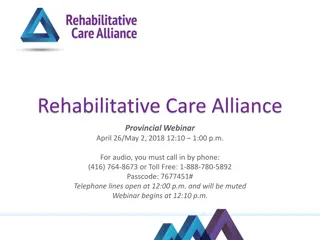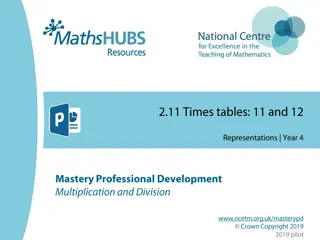The CANS Webinar for Improved Service Planning
Explore the purpose and importance of the Child and Adolescent Needs and Strengths (CANS) assessment tool in service planning. Learn how to accurately rate the CANS and its role in effective planning for better outcomes. Discover the statutory requirements and development history behind the CANS. Join the webinar series to delve into case conceptualization, needs assessment, goal setting, and progress monitoring.
Download Presentation

Please find below an Image/Link to download the presentation.
The content on the website is provided AS IS for your information and personal use only. It may not be sold, licensed, or shared on other websites without obtaining consent from the author.If you encounter any issues during the download, it is possible that the publisher has removed the file from their server.
You are allowed to download the files provided on this website for personal or commercial use, subject to the condition that they are used lawfully. All files are the property of their respective owners.
The content on the website is provided AS IS for your information and personal use only. It may not be sold, licensed, or shared on other websites without obtaining consent from the author.
E N D
Presentation Transcript
The CANS Webinar will be starting soon . . . While you are waiting, we recommend that you: Close all file sharing applications and streaming music or video Make sure your computer audio is working, is not on mute , with the volume at the desired level This webinar will be recorded and information on its availability will be found on the OCS website at: www.csa.virginia.gov
How the CANS Can Help You With Effective Service Planning and Improved Outcomes (Part 1) CAROL WILSON OFFICE OF COMPREHENSIVE SERVICES FRIDAY, FEBRUARY 28, 2014
Our first question . . . Why did you choose to join today s webinar? Please post your response in the Question and Answer pane on the right of your screen.
Your presenter Carol Wilson
Today, we will cover . . . What is the purpose of the CANS and why we use it How to rate the CANS accurately and its importance to effective service planning
In Part 2 of this webinar series, we will . . . Explore the use of the CANS in the development and review of service plans Case conceptualization Types of needs (pathway, background, treatment) Strengths Developing goals and objectives Monitoring progress Incorporating revisions based on reassessment Goal attainment
Why do we have the CANS? Statutory requirements for a mandatory uniform assessment instrument (MUAI) for children and youth served by the Comprehensive Services Act (CSA) COV 2.2-2648 (11) COV 2.2-5210 Appropriations Act Item #283 B (9) In 2008, the State Executive Council, based on the recommendations of an interagency workgroup, selected the CANS as the mandatory uniform assessment instrument for CSA.
Why the CANS? The Child and Adolescent Needs and Strengths (CANS) and related assessments were developed by John S. Lyons, Ph.D. A shared vision of children and families Not about the system or what is best for the system Enhance communication across agencies and with parents when working with children and families A communimetric , not a psychometric, tool Uses everyday terminology which is easily understood for families and across disciplines
Assessment Alphabet Soup Each agency has their own assessment(s) DJJ Court Services Units have the YASI DSS has the VEMAT, SDM, OASIS assessments CSB has the VICAP Schools - Child Study for Special Education Each of these assessments have different purposes for specific populations of children and youth
Why do we do assessments? Why do we do assessments when working with children and families? To gather and organize information about the child and family assessments provide a structured way to do so What kind of information is collected? Why is that information important? To narrow focus on issues to be addressed As the basis for service planning by directing and guiding the determination and prioritization of goals and objectives
Why the CANS? Three primary purposes in selecting the CSA mandatory uniform assessment instrument: Utility in service planning Outcomes measurement Assess the child s level of need to determine appropriate services
CANS . . . the Vision Professionals have a good working knowledge of the CANS item meanings and how to rate the CANS Parents are invited (prior to FAPT) to access the CANS Training website to learn about the assessment or are provided hard copy information about CANS
Vision CANS assessment completed at the FAPT with parents, providers, and other individuals involved in the family s life to provide maximum information The completed CANS is used as foundation for creative, child-specific service plan using natural supports and family strengths as appropriate in addressing identified needs
Vision The service plan is developed without emphasis on cost. First determine what is needed (may not be a service ) and then decide how to pay. What already existing resources could be used or be provided at no cost? All providers involved with child and family use the same service plan with the same goals and objectives (based on CANS), interventions/services and time frames
Vision The CANS is completed (reassessment) at the next FAPT review for child, noting progress or lack of progress in specific areas and the service plan is adjusted accordingly Consider any new needs or strengths identified on the CANS which have emerged and integrate objectives and strategies into service plan to address these
But all too often . . . Reality The worker or case manager does not have, or take the time to study and learn the CANS; tries to learn enough just to pass the certification The worker rates the CANS based only on his or her knowledge of the child and family The completed CANS (along with a completed service plan) is taken to FAPT, based on discussion with his/her supervisor The service plan is cookie-cutter, e.g., the family will comply with services, agency will provide intensive in- home services, child will attend school, etc.
Reality Funding streams and their requirements drive selected interventions or strategies The FAPT reviews and rubber stamps (rather than develops) the assessment and service plan. The CANS is filed in CSA folder for documentation
Reality Service providers each develop their own plan for the child and may not see the service plan developed for FAPT Service providers have agency-specific requirements regarding how to develop and use their service plans More than one case manager is assigned to child and family e.g., DSS foster care worker, TFC case manager, or intensive in-home case manager, etc. Goals may conflict e.g., residential goal to successfully complete the program (which lasts 12 months) may not be consistent with FAPT goal to provide family with enough support to bring child home as soon as possible
How do we make the Vision = Reality? Understand, teach and integrate into practice the: critical necessity of involving the child and parents in their own assessment and service planning if they re not involved in a meaningful way, no matter how hard everyone else tries, there s less likelihood of success importance of reliable and accurate assessment of child and family needs and strengths; it s not just a form to complete to get funding
Vision = Reality Understand, teach and integrate into practice the: necessity of cross-agency conversation and input providing each discipline s expertise, resources and experience regarding assessment and planning ability for FAPT to create interagency family and child- specific plans without cost being primary consideration
Accurately Rating the CANS Accurate rating of assessment Focuses and defines service plan Re-evaluate service plan Goals attained or lack of progress Implement service plan
Rating the CANS Strengths items 0 indicates a centerpiece strength; may be important in service planning 1 indicates a strength exists in this area; may require some development 2 indicates strength has been identified, but no action taken to build or develop 3 no strength identified in this area
Rating the CANS Ratings of 0 to 3 Needs items 0 indicates no evidence of need 1 mild level of need and/or history of need 2 moderate level of need 3 severe level of need Corresponding action levels of each rating on needs: 0 no need for action 1 monitoring, watchful waiting or prevention 2 requires action to ensure that the identified need is addressed 3 requires immediate or intensive action Needs items rated 2 or 3 should be addressed on service plans
Rating the CANS The lower the rating on both strengths and needs items, the better the child is functioning Lowering of numbers indicates improvement in functioning
CANS Item Meanings Because the CANS uses everyday language, people may assume they know what the item means But, CANS items have specific meanings and raters must know and understand those meanings to reliably rate the CANS Not only must the rater understand the 0-3 ratings for each item, but they must understand the specific item meaning Resource materials are available in addition to the CANS Users Manual (Glossary, Family-Friendly Interview)
Modules Child functioning modules Developmental Trauma - includes physical, sexual and emotional abuse, but also other types of trauma (medical, environmental, etc.) Violence Sexually aggressive behavior Juvenile justice Runaway Substance use Fire-setting Modules permit the assessor to gather more information about a specific area of need and may significantly influence the development of the service plan Only used with the Comprehensive version of the CANS
Results of Reviewing CANS Three primary issues identified in reviewing completed CANS: 30 day time frame Lack of use of action levels to override Rating child in services , not child Result was that data reflected children and youth did not have severe needs
Six Key Principles Underlying Rating the CANS Thirty day time frame on many items - can and should be overridden if action is needed Item level validity with each item having immediate relevance for service planning Action levels corresponding to each rating for needs and strengths About the individual, not the service rate the child, not the child in services Consider cultural and developmental factors Descriptive, not determining a cause
Relevance for Service Planning Immediate relevance to service planning if item is on the CANS, it can be used in service planning
Culture and Development Rate the child/youth within the context of his/her culture and stage of development Examples
Agnostic as to Etiology Items are descriptive and a cause is not assigned as to why the child has the need
Action! Rate child, not child in services
Action! Items are rated not only to reflect the level of severity of the need/behavior, but also must reflect the action taken to address the need If action (or services) must be taken to address this need/behavior, the item must be rated a 2 or 3 Does not prevent services from being put in place to address items rated a 1
Thirty Days? Thirty day time frame on some items (not all) Action levels can and should be used to override level of severity of an existing demonstrated need, if necessary
Rate the CHILD Rate the child, not the child in services Child in residential treatment If the child was placed back in the community today, would the need reemerge? OR Has the child internalized behaviors which meet the need?
Planned Permanent Caregiver Who is the Planned Permanent Caregiver? Very important to identify appropriately NOT the local Department of Social Services or probation officer The PPC is the legal guardian for a child who is not in foster care. If the child is in foster care, please rate the identified parent, other relative, adoptive parent, caretaker who is planning to assume custody of the child. There are two times N/A may be used in PPC Domain: Goal of Independent Living (phased out) TPR granted; no adoptive family yet identified
Planned Permanent Caregiver Rate the PPC items on how each item (need or strength) affects their ability to care for the child Provides: assessment of parent or guardian needs and strengths service planning is about the child AND family decision support re: permanency documentation regarding how that decision was reached
Accurate Rating of the CANS Print a copy of the User Manual of item rating definitions for use when rating a CANS Complete with the family or ask for input from family Make sure you understand specific item meanings
For example . . . Optimism (Child Strengths) refers to a sense of future orientation Legal (life functioning) refers to child s involvement with the legal system, whereas Delinquent Behavior (child risk behaviors) refers to behaviors that may or may not have resulted in legal action Danger to Others (Child Behavioral/Emotional Needs) does not mean the child must meet the criteria for hospitalization
For example Difference between Family and Living Situation Difference between Physical Health and Medical Independent Living below age 14? Social Behavior -intentional misbehavior Two items require cause and effect
Tips for Passing the CANS Certification Print a copy of the User Manual with item rating definitions for use when rating a CANS Remember the vignette assumption Understand the rating for strengths 3 is no evidence of a strength If a rater is only off by one point on an item (say you rate a 1 and it really should be a 0 ) the overall score on the test is not dramatically affected. However, rating a 0 for a 3 or a 3 for a 0 is a significant error and can cause a user to fail to reach proficiency. It is especially important not to confuse strengths and needs because of the potential for a 3 point error.
For more information and registration: www.cpe.vt.edu/ocs/index.html
Thank you for joining us today Please visit the Virginia CSA website at: www.csa.virginia.gov for any of the resources mentioned during this webinar
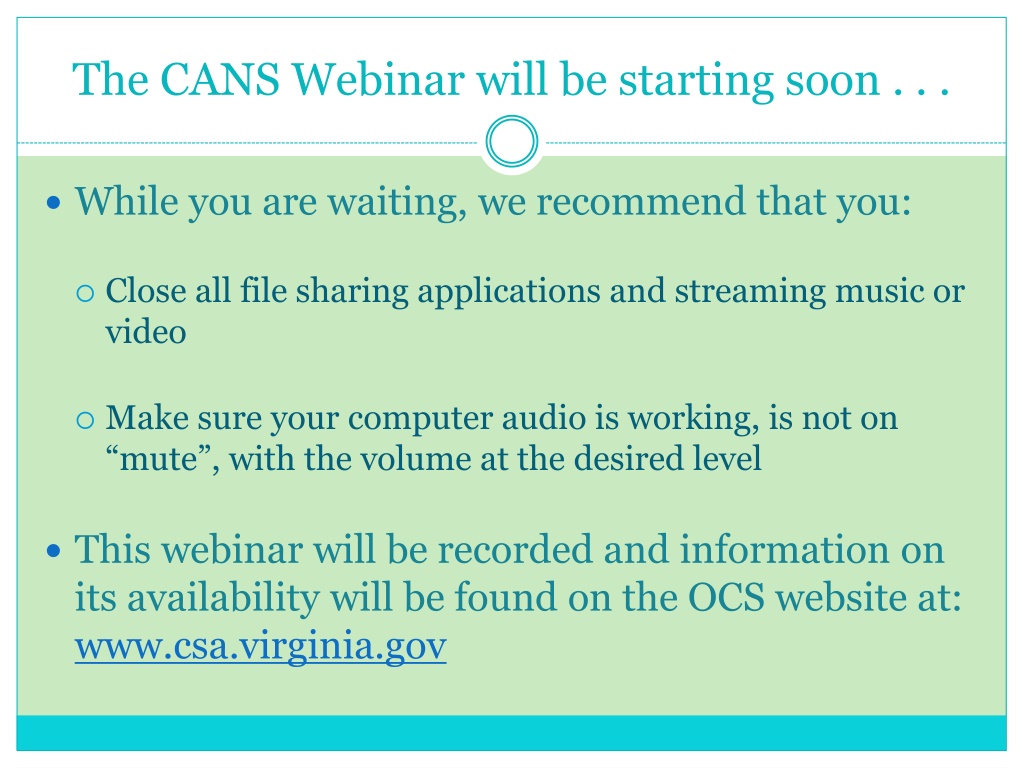










 undefined
undefined









